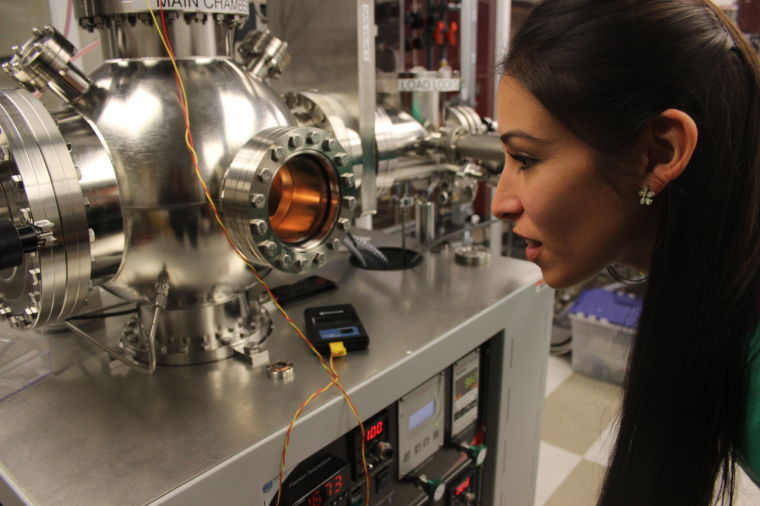A world without blindness may sound like something out of a sci-fi novel, but thanks to the research of material science professor Orlando Auciello, it may someday become a reality.
For more than a decade Auciello has taken part in a joint federally and privately funded project made up of several interdisciplinary scientists, researchers and medical experts to develop the Argus II Retinal Prosthesis System, which can potentially give partial sight to the blind.
“You have to understand that- not to give false hopes to people, it’s not a complete return to normal vision,” Auciello said.
The current version of the device consists of a chip outside the eye that is connected to a pair of sunglasses with a small camera attached. The chip sends signals to the rest of the device, allowing for the person wearing it to see some light. It was approved by the Federal Drug Administration in 2013.
Auciello’s contribution to the project was in developing this special diamond coating for the chip. He’s spent much of his time in U.S. laboratories creating this diamond coating.
Still in its early phases, the device was tested on 31 people in five countries over the course of five years. Results showed that participants could recognize some objects such as a door or large letters in a newspaper.
In one example of the testing, a once-blind woman successfully shot a basketball through a hoop.
“She cannot see the basket with very high resolution, she can see it with shadows but after being totally in the dark, people with a device like this can see some light,” Auciello said.
However, due to lack of funding, an advanced version of the device that requires the diamond-coated chip to be implanted inside the eye has not yet been approved by the FDA.
Making diamonds
In a highly-secured laboratory in the material science department on campus, Auciello supervises post-doctoral material science student Erika Fuentes-Fernandez and materials science graduate student Adriana Carolina Duran Martinez in creating diamond films.
Although, the diamonds in Auciello’s lab aren’t the kind of diamonds you see at the jewelry store; these are ultrananocrystaline diamonds or UNCD. And while scientists have been creating lab-grown diamonds for decades, Auciello said this material is particularly special.
“These grain sizes are much smaller than the other ones and that gives a unique series of properties to these thin films,” Auciello said.
Using a semi-conductor, a machine that heats up filaments to grow diamonds at temperatures of about 1,500 degrees Celsius, Auciello and his assistants grow samples of the UNCD.
“It’s very resistant to chemical reactions which make it very stable, it has very low friction which make it useful to protect mechanisms from wearing out,” Fuentes-Fernandez said.
Auciello said the material exhibits the lowest friction of any material known. It is also bio-compatible, meaning that if put inside the human body, it doesn’t cause any negative effects.
“It’s pretty exciting because (working with) this type of new material-the ultranano diamonds- is a really wide field,” Fuentes-Fernandez said. “We have a lot of opportunities for applications in all types of fields like mechanics, biological, chemical applications; there is a lot of good work we can do.”
Market potential
With his two companies, Advanced Diamond Technologies and Original Biomedical Implants, Auciello is also promoting UNCD technology for other medical uses.
For example, Auciello said in many prosthetic devices such as artificial hips, knees, shoulders and dental implants, a problem arises in that the material that make up the prosthetic devices are chemically attacked by the body and become corroded by friction. The UNCD-coated technology solves this issue.
Also because of the material’s properties- or high resistance to water- it could help in the advancement of the artificial heart, Auciello said.
Although because the UNCD-coated technology hasn’t yet been approved by the FDA, it hinders the technology’s market growth.
“We believe that UNCD coating can enable this whole new generation of medical implants,” said Auciello. “But all these [things] need money for research and development which is very difficult to get in this time and age in this country, that’s part of the big problem we are facing.”





